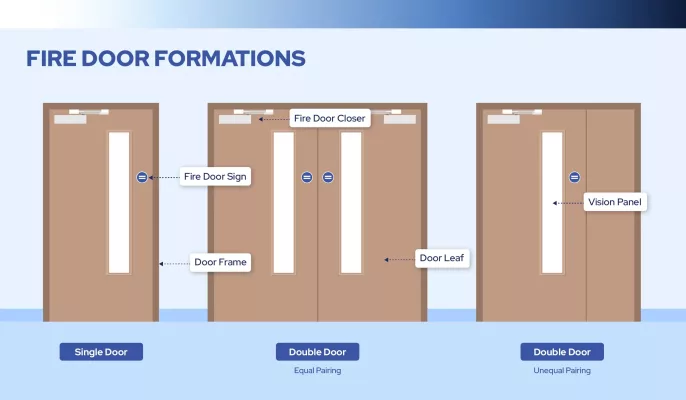Innovative Steel Energy-Saving Fireproof Window and Manufacturing Process Abstract:This invention pertains to the technical field of fireproof doors and windows, specifically introducing a unique design and manufacturing process for a steel energy-saving fireproof window. The fireproof window consists of an outer frame and an inner sash. The inner sash is equipped with double-layer glass, enhancing […]
Tag Archives: Manufacturing Process of fire window
Manufacturing Process of Fire Windows
Introduction: More Than Just a Window
A fire window is not an ordinary glazed opening—it is a tested life-safety component designed to maintain integrity during a fire, restrict smoke movement, and sometimes provide insulation against heat. In my own experience, the manufacturing process determines whether a fire window will pass certification or fail on site. YK 门业 (YK Door Industry Co., Ltd.), an Asian fire door and window supplier, follows a controlled, multi-stage process to ensure consistent performance for projects in Africa, the United States, and Europe.
1) Selecting Certified Materials
The process starts with materials that meet both structural and fire performance requirements:
Frame: Steel, stainless steel, or fire-rated timber, depending on rating and application. Galvanized steel is common for its strength and corrosion resistance.
Glazing: Fire-resistant glass such as wired glass, clear ceramic, or borosilicate-based laminated glass. Thickness and type are dictated by the required rating—30, 60, 90, or 120 minutes.
Seals: Intumescent and smoke seals to expand under heat and block flame and gases.
In a Boston, USA, hospital renovation, we selected ceramic glass for its clarity and 90-minute fire rating. The choice met NFPA 80 and local healthcare regulations while preserving visibility in critical care areas.
2) Frame Fabrication
Frames are cut, bent, and welded or mechanically joined to precise tolerances. Corners are reinforced, and any welds are ground smooth to ensure an even seal with the wall. Mounting brackets or fixing plates are added according to installation type (masonry, drywall, or curtain wall).
During a Cape Town, South Africa, coastal office project, we specified stainless steel frames with additional passivation to combat salt-laden air. This extended the expected service life without increasing maintenance costs.
3) Glass Preparation and Edge Protection
The selected fire glass is cut to size in a clean environment to prevent micro-fractures that could lead to early failure during a fire test. Edges are polished or sealed to reduce stress points. In some cases, a protective interlayer is applied to improve impact resistance.
In Warsaw, Poland, a mixed-use development required multiple sizes of EI₁ 60 glass panels. By cutting and edge-finishing in-house, we maintained consistency across 120 openings, avoiding rejections during site inspection.
4) Glazing Assembly
The glass is installed into the frame with a listed glazing kit, including setting blocks, intumescent liners, and steel or hardwood beads. Every part of the glazing system must be the one tested with that specific glass and frame combination—no substitutions are allowed.
My view: glazing is where many projects fail inspections. Even a correct glass type can fail if it is installed with the wrong bead material or without intumescent liners.
5) Applying Protective Coatings and Finishes
Steel frames are treated with anti-corrosion primers and then finished with powder coating or paint. Colors can be matched to the project’s design scheme, but coatings must withstand high temperatures without degrading prematurely.
A New York City school project needed fire windows that blended with heritage woodwork. We applied a heat-resistant wood-grain finish via powder coating on steel frames, keeping the safety rating intact.
6) Quality Control and Fire Testing
Before leaving the factory, each fire window is checked for:
Dimensional accuracy within ±1 mm.
Glass type, thickness, and labeling compliance.
Seal continuity and correct bead fixing.
Surface finish quality.
Sample units undergo full-scale fire testing to verify performance against UL 9 in the U.S. or EN 1634-1 in Europe. Testing ensures the assembly meets its declared rating for integrity (E) and, if required, insulation (I).
7) Packaging, Delivery, and Site Support
Frames and glazing are packed with protective foam and corner guards to avoid edge damage during transport. Some projects, particularly those overseas, require disassembled shipments with site glazing under supervision.
In Lagos, Nigeria, a high-rise commercial tower received its fire window frames first, with glass shipped separately to prevent damage. YK 门业 technicians provided on-site training for proper installation and sealing, helping the project pass its final inspection on the first attempt.
Conclusion: Precision at Every Step
A fire window’s safety performance depends on precision at every manufacturing stage—from material selection to final inspection. Skipping quality checks or substituting uncertified components undermines the entire assembly’s rating. By following a controlled process and maintaining full traceability, manufacturers can deliver windows that meet both safety regulations and design expectations.
YK 门业 (YK Door Industry Co., Ltd.) delivers certified fire windows to global projects, combining proven engineering, rigorous quality control, and customization for diverse climates and building codes.


